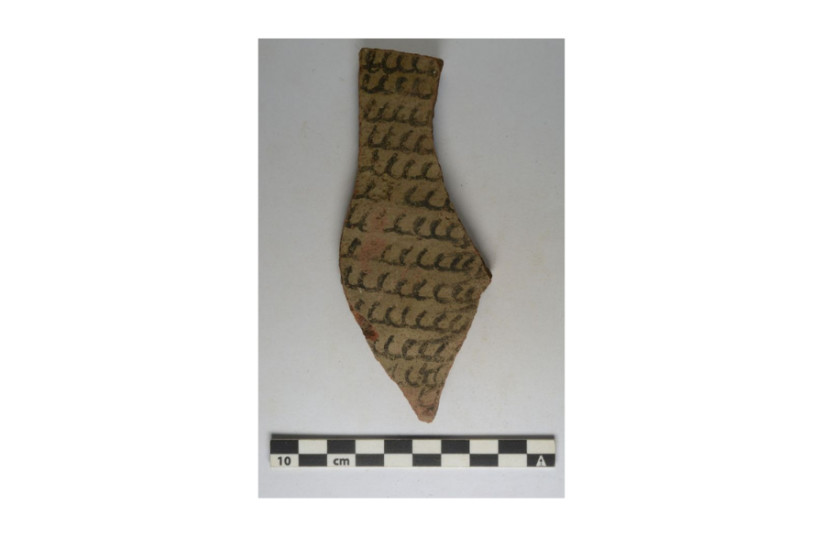Minute fossils unearthed in preserved charcoal point to the existence of an entirely unknown group of plants that were among the first to move onto land.
The eophytes offer a glimpse of the early evolution of life on land, and may be closely related to the ancestor of many terrestrial plants that followed.
Ancient plants measuring just two centimeters long could show what the ancestor of everything from roses to redwoods looked like.
Researchers from Cardiff University and the Museum identified a new group of plants, named 'early plants' or eophytes, from delicate remains that have been preserved as charcoal. Their characteristics make it possible they are closely related to the ancestor of all vascular plants, but the fragility of the specimens has made this difficult to confirm.
Lead author Professor Dianne Edwards says, "The nature of the first land flora is an enduring mystery where the principal players have never been seen in their entirety, yet much can be inferred about their characteristics from what they have left behind."
The scientists hope that their research, published in the journal New Phytologist, will inspire others to hunt for other eophyte fossils and uncover more about the earliest days of terrestrial life.
How did plants evolve?
When and how the ancestors of modern plants first adapted to life on land remains uncertain. It is thought that the ancestors of modern flora first moved onto land at some point between 450 and 500 million years ago.
One way of answering these questions is through cryptospores, which are the enigmatic fossilized remains of plant reproductive structures, although the exact plant they came from remained a mystery.
Dr. Paul Kenrick, an expert on fossilized plants at the Museum and co-author of this latest study, explains, "There are several ways that you can look at the fossils of plants. One of them is to look at the spores and pollen plants make because they produce it in vast numbers.
"The cryptospores date back to around 470 million years ago before disappearing around 70 million years later. They're called cryptospores because they're very distinct but we didn't know which plant produced them."
One of the issues with identifying where these spores came from is the difficulty for early plants to fossilize as they lack robust tissues which can be preserved over time. For delicate plants and tissues, charcoal is an important medium for preservation.
"These plants were caught in some of the earliest wildfires," Paul says. "When these plants burned, they didn't burn with enough oxygen to be turned to ash, so their structure is preserved. However, the problem with charcoal is that it is very fragile so we have very fragmentary remains."
Previous studies of these fossils have provided some hints to the origin of the cryptospores. Fragments recovered from Oman suggest that they probably formed in sporangia, similar to those found in modern mosses, ferns and liverworts.
Subsequent fossils found in Wales, which date towards the end of when cryptospores are found, suggest that the plants that produced them could be a sister group to the vascular plants, the group which includes most plants, such as trees, flowering plants and cacti.
But fossils in charcoal from Shropshire dating to between 410 and 419 million years ago have now led researchers to put a name to the enigmatic group of plants which produced these spores—the eophytes.
Excavating the eophytes
The eophytes are very different from modern plants. One of their most remarkable features is how small they are, measuring around two centimeters at their maximum length.
"Nowadays, around 80% of biomass in terms of carbon is locked up in plants," Paul says. "In this very early period, things were very different.
"The eophytes are really, really tiny. We're talking plants that could be millimeters in size, and this could be one of the reasons they have previously been overlooked.
"Their closest comparison in the modern world are the mosses, which they share some characteristics with but are not examples of. It tells us that the first plants which came on land were very simple and very small compared with their modern relatives."
Their size would probably have made them unable to control water flow in and out of their bodies, so instead they must have been able to tolerate drying out like modern mosses and liverworts.
"One of the really important things with modern plants is that they are generally homohydric, in other words that they can regulate their water to a great degree," Paul explains. "However, the eophytes were probably more like mosses in that they were unable to control their water, and so would have been able to dry out completely before rehydrating.
"It tells us that plants probably became resistant to drying out on land first before becoming able to control their surroundings, rather than having already been able to regulate water."
The eophytes do, however, appear to be able to move nutrients around their body using specialized structures known as food conducting cells (FCCs). Modern mosses have similar structures.
The FCCs also share characteristics with the phloem of vascular plants, which moves nutrients around the main structure of the plants. It is suggested that the FCCs were a very early step in the development of a complex vascular system, which would later allow plants to grow much larger and more varied, evolving into the species familiar to us today.
The researchers now hope to delve more deeply into how these plants lived, such as identifying aspects of their reproductive phase. To do this, more specimens will be required, which will involve returning to sites which have already been explored.
"These plants are forcing us to change what we search for in the fossil record," Paul says. "We now need to focus on a scale that is much smaller than what we normally look for, so we can go back to fossil sites we've already explored and look closer.
"There are also other sites where you get exceptional preservation, such as the Rhynie Chert, and it's in this sort of system you might find more information about the lifecycle of these plants."

































